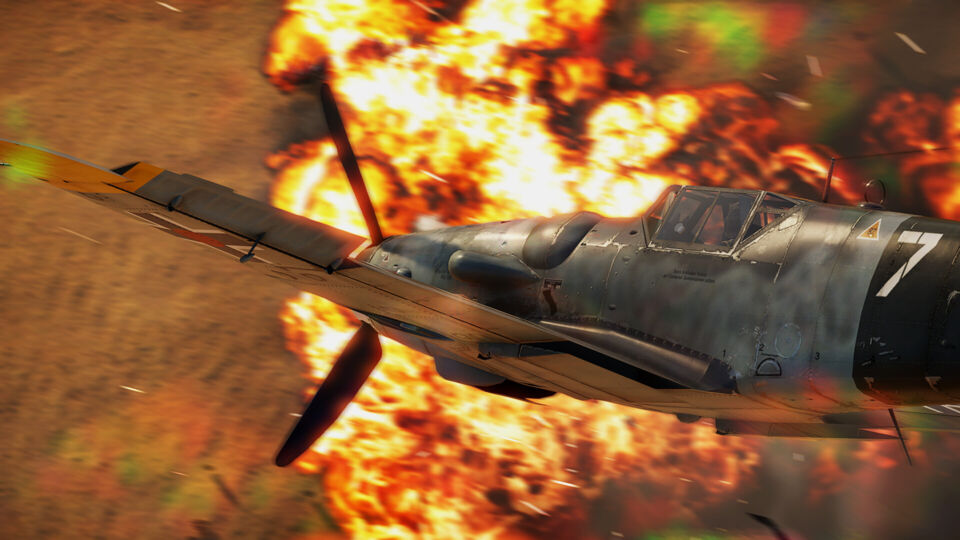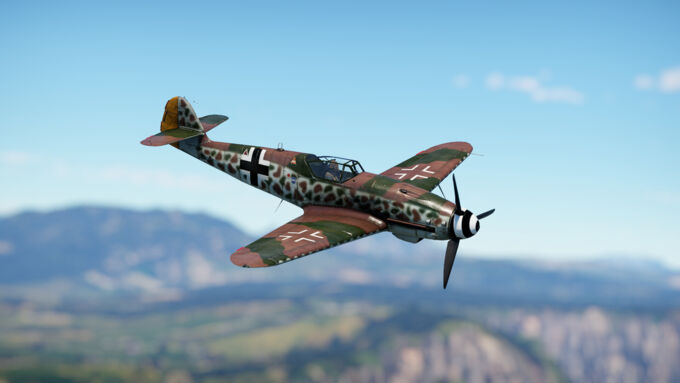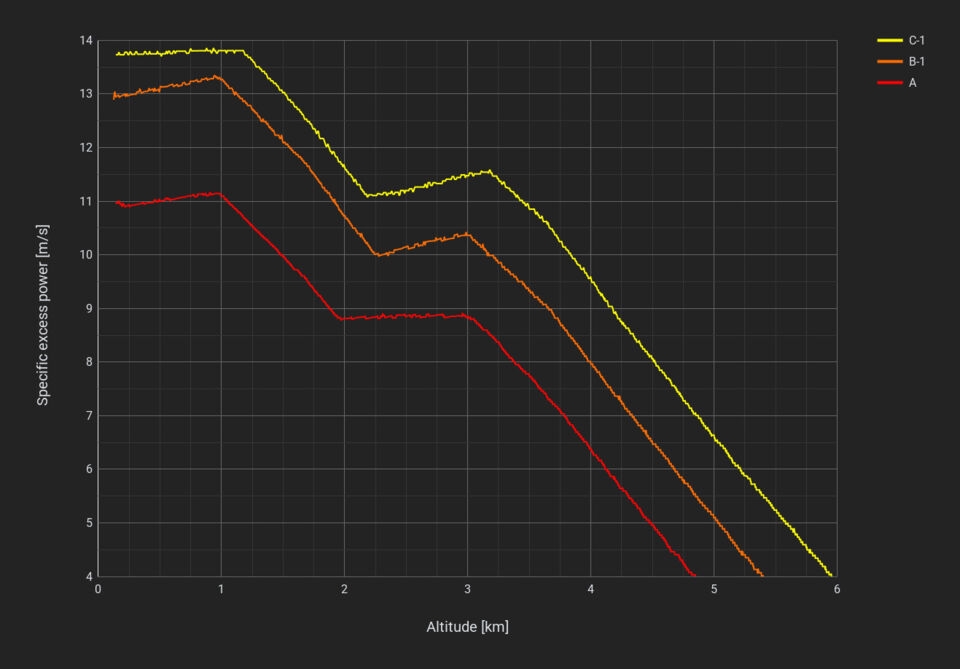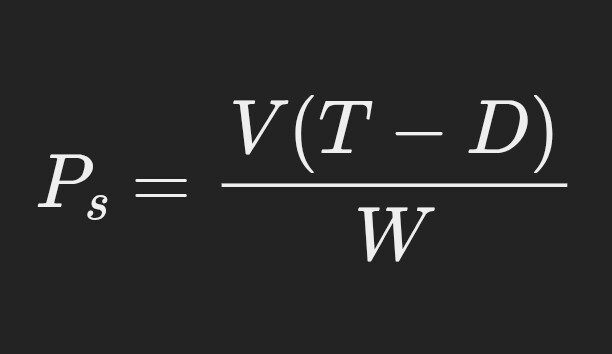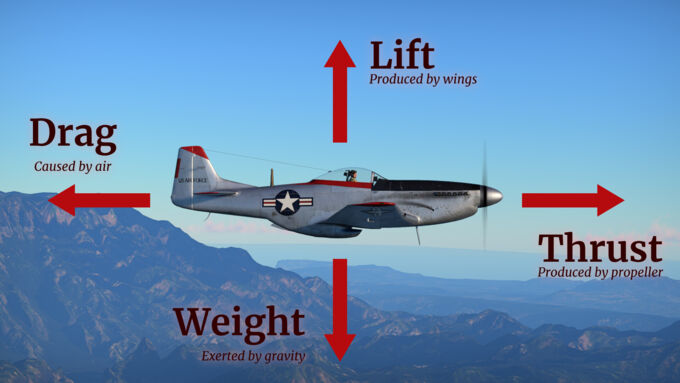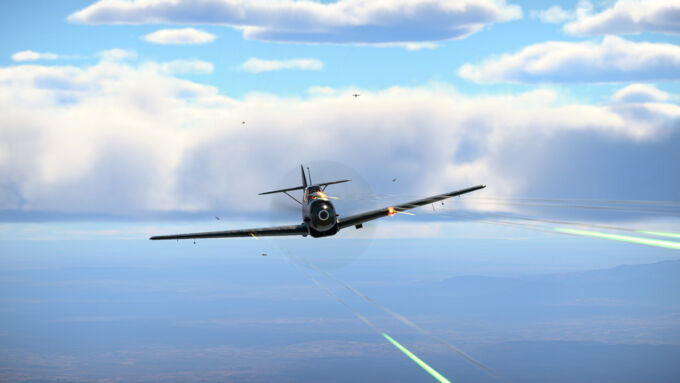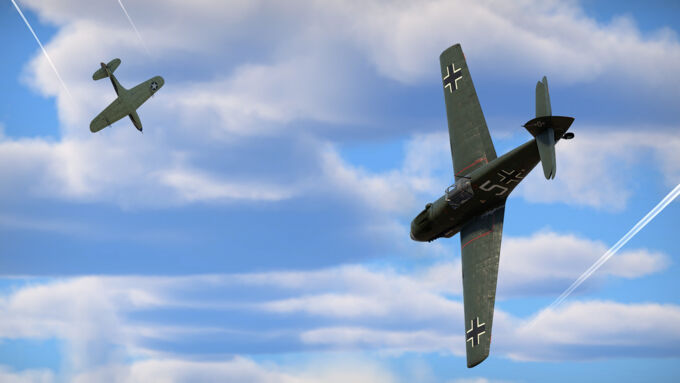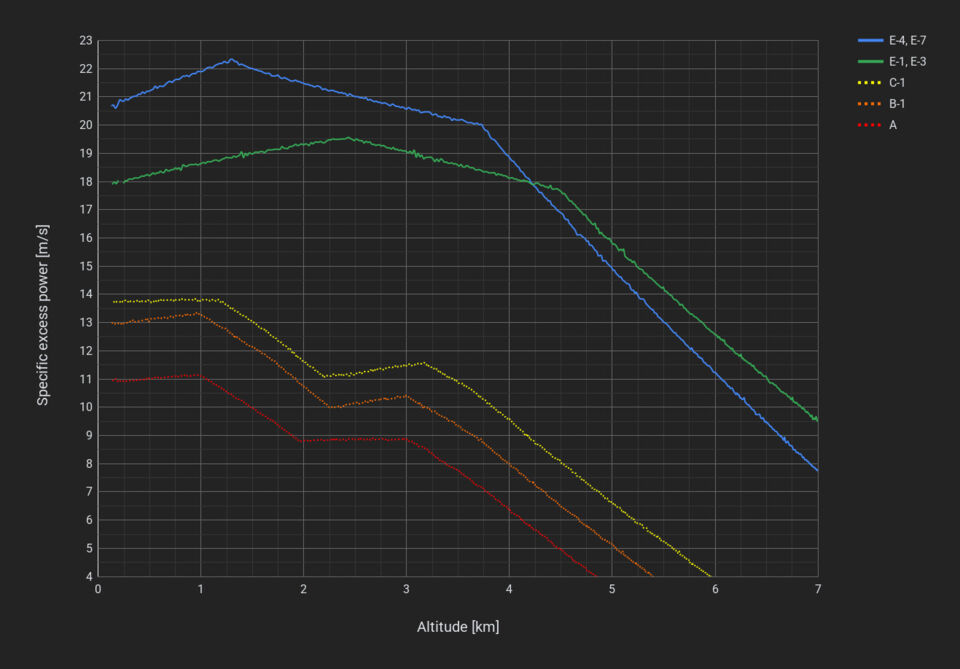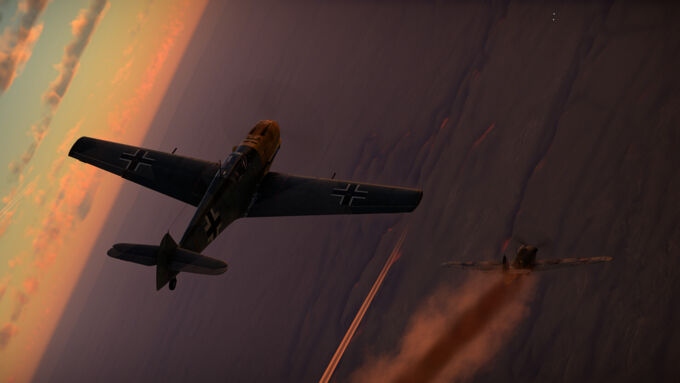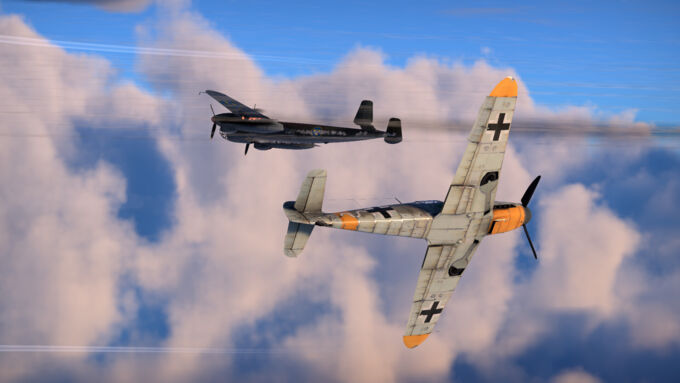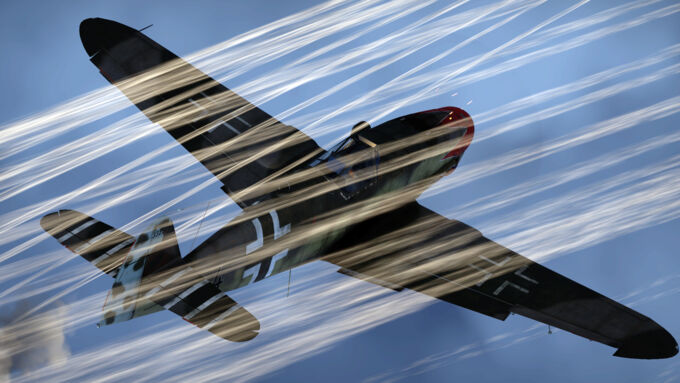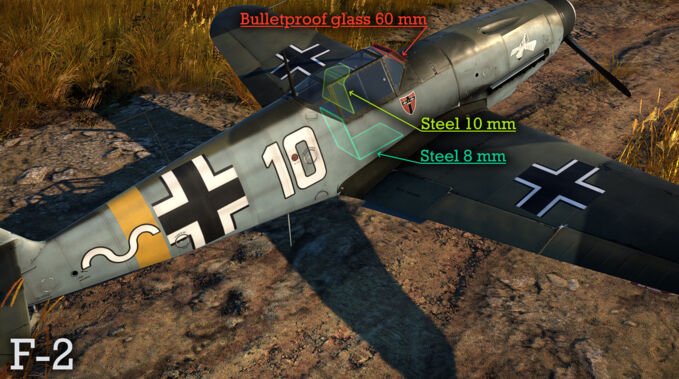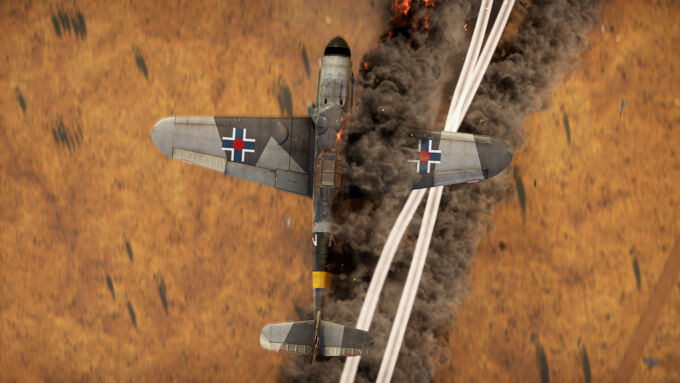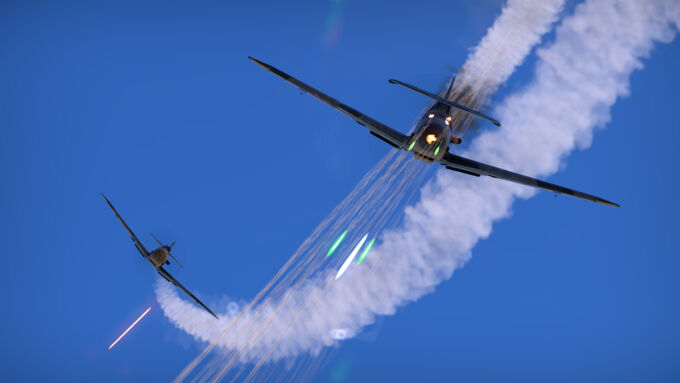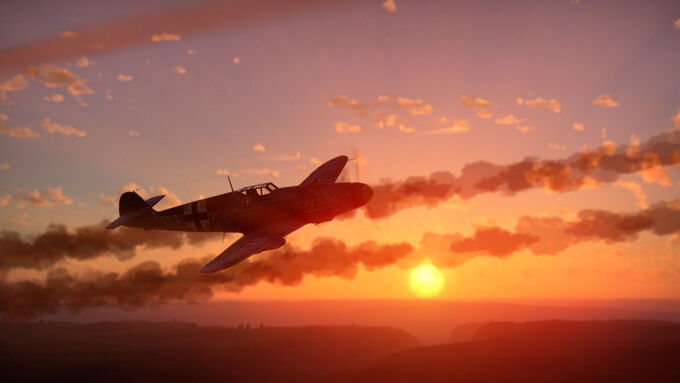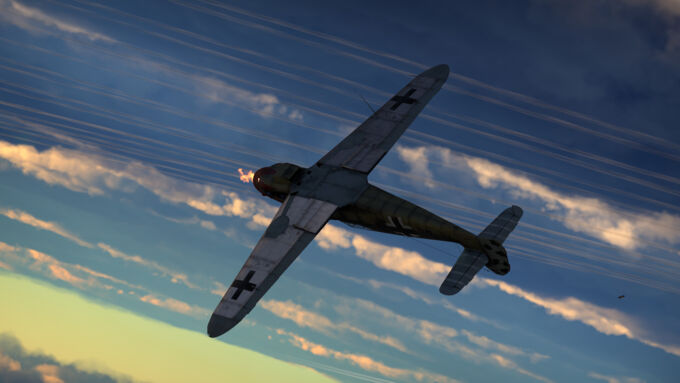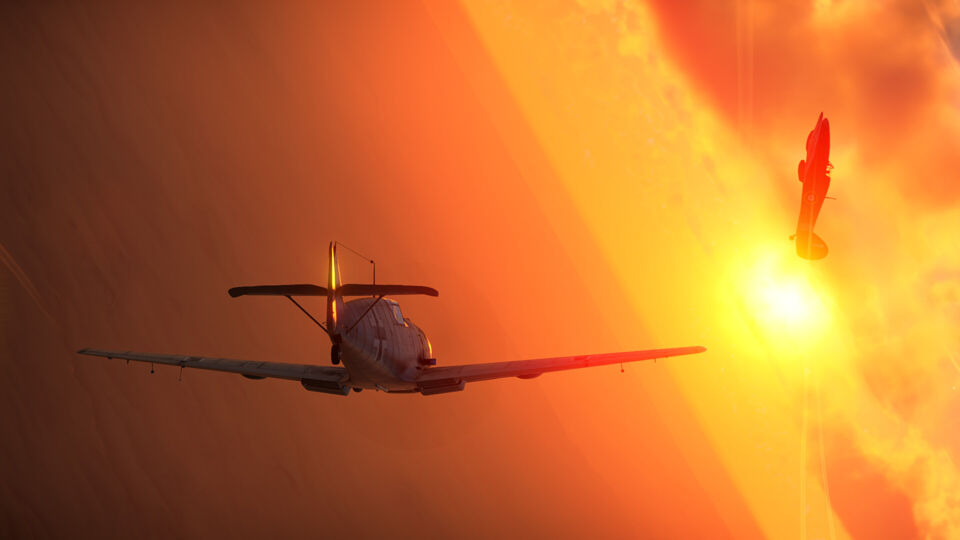The Bf 109 (or Me 109) really needs no introduction. It is one of the most famous and popular aircraft of the Second World War, and the fighter with the most aerial victories ever. In my previous article, I wrote about the history of the Messer’s development. This one will focus on these fighters in War Thunder (primarily in Air RB), their performance, strengths & weaknesses, tactics, recommendations, and some fancy graphs.
What 109s are there?
The game features 28 aeroplanes of the Messerschmitt family, 19 researchable and 9 premium ones. However, note that many identical or almost identical aircraft exist in different tech trees, bringing the number of unique planes to slightly more than 20.
As expected, most Messerschmitts sit in the German tree, but a surprising number are in other nations. Most premium 109s are not German but are captured by or supplied to Italy, Finland (a subtree of Sweden), the USA, and even Japan. This means one doesn’t have to play Germany to try a Messer.
From the start of its career in 1937 during the Spanish Civil War to the end of the Second World War and the Arab–Israeli War of 1948, the Bf 109 changed beyond recognition, both in its appearance and abilities. That's why we'll consider each variant’s performance and play style independently. I subjectively divided the Messerschmitts into three groups: Early, Middle, and Late. The last one is fairly broad, spanning from F-1 to K-4. These aircraft are very different in their abilities and the enemies they face, but they do share some common traits and are played using similar tactics.
Early (A, B, C)
There are only three early Messers, which are quite similar. They have almost the same airframe, mostly differing in engine and armament.
| Vehicle | In-game nations |
|---|---|
| Flegel’s Bf 109 A | German (prem.) |
| Bf 109 B-1 | German |
| Bf 109 C-1 | German / German (event) |
Flight performance
Unlike later series, the Anton, Berta, and Cäsar are much less known and popular. And rightfully so, because these planes do not particularly excel at air combat. Despite being manoeuvrable by Messerschmitt standards, they cannot compete with the biplanes and turn fighters they regularly encounter. Instead, they have to rely on speed to survive. A & B-1 are powered by 670 hp Jumo 210D, while C-1 has a 720 hp Jumo 210G engine, accelerating the aircraft to about 410–440 km/h in a straight line at low altitude, where most fights happen.
Below is a graph showing the specific excess power of the Bf 109 A, B, and C at different altitudes, given a constant IAS of 300 km/h and maximum throttle. Basically, it’s a graph of climb rate and low-speed acceleration at various altitudes.
| 1 km | 2 km | 3 km | 4 km | 5 km | 6 km | 7 km |
| 3300 ft | 6600 ft | 9800 ft | 13,100 ft | 16,400 ft | 19,700 ft | 23,000 ft |
(rounded to hundreds)
Overview
Specific excess power is a crucial metric of aircraft performance, representing the rate of energy change. In short, it defines the acceleration and climb rate of the aeroplane at any given moment.
Planes with more SEP have more freedom in any situation, as they can gain energy more quickly, either in the form of altitude or speed. It’s important to note that SEP doesn’t necessarily align with top speed; rather, it affects how fast the top speed can be achieved.
All the graphs in this article only represent SEP at 300 km/h IAS; they don’t paint the whole picture of the aircrafts' performance at all speeds. They're useful for a general understanding of a given plane’s performance at low speeds, where most dogfights happen.
Understand a bit deeper
Let’s first understand what the name “specific excess power” means.
Power is defined as the rate of transfer/change of energy over time.
Some of the engine power is used to overcome drag, and what remains is called excess power — this is what can be used to gain speed or altitude.
“Specific” means we divide this value by the aircraft’s weight to normalise it — heavier planes need more power to achieve the same performance, and this allows for fair comparisons across different aircraft. In general, when referring to energy in the context of aviation, we are talking about the specific energy, energy divided by weight. SEP is the rate of change of specific energy.
Mathematically:
Where
Pₛ — specific excess power;
V — velocity;
T — thrust;
D — drag;
W — weight.
As you may remember from physics class, velocity times force equals power. In our formula, V × T is often called power available, and V × D — power required (that is, required to overcome drag). Their difference, alternatively written as V × (T − D), is the excess power. Divided by weight, it becomes specific excess power.
Velocity here is usually measured in metres per second, and forces in newtons. Newtons cancel out, and we’re left with SEP measured in m/s. Alternatively, N × m/s = W (watt, a unit of power). Thus, SEP is also measured in W/N. These units are identical, but in most cases, SEP is written in m/s.
When thrust equals drag, the SEP is zero, and the aircraft doesn’t gain or lose any energy — steady level flight. When thrust is bigger than drag, the SEP is positive and the aeroplane can direct the gained energy into kinetic (speed), potential (altitude), or both at the same time.
When the aircraft climbs at a constant airspeed, its acceleration is zero; hence, all power is directed into the climb. In this case, the rate of climb is equal to SEP in m/s. However, planes rarely climb like this because they need to keep IAS constant, not airspeed. The plane must accelerate to compensate for the decreasing air pressure with altitude and keep IAS constant. Part of the power is used for the acceleration, and less goes into the climb. Thus, the climb rate is just short of the SEP value.
As we can see, Bf 109 A is significantly worse than Bf 109 B-1, it is much heavier. So it isn’t really worth buying this plane unless you want it in your collection. All early Messerschmitts perform the best at around 1 km, followed by a “valley” at 2 km and another peak at 3 km. Higher than this, engine power begins to plummet from already limited to the point where the aircraft is a sitting duck and cannot do much. Of course, many aircraft of this rank aren’t suited for such heights, so it isn’t a particular weakness of the 109s.
For the first rank, these Messers have a very high rip speed: 790 km/h. In fact, all planes of the Bf 109 family share this limit. Getting to such speeds is fairly difficult for the early Messers, so they shouldn’t worry about overspeeding. Combat flaps can be deployed under 387 km/h, takeoff under 371 km/h, and landing under 250 km/h.
Weaponry
Bf 109 A and B-1 have 2 cowl-mounted 7.92 mm MG 17 machine guns, and C-1 adds another 2 in the wings. The armament is quite average for the rank, though less than desired. I recommend using the Universal or Tracers belt with AP rounds, as they work nicely against weak biplanes, damaging the enemy’s engine and cooling to make them even slower, and can take out the pilot to instantly get a victory.
Early 109s don’t have any options of suspended armament like bombs or rockets, rendering them almost useless for ground attack.
Survivability
As should be expected, survivability is lacklustre. All early 109s have a fragile airframe and no armour protecting the pilot and the engine. Fortunately, the absolute majority of planes at this rank are armed with only a few low-calibre machine guns. In some cases, it's worth taking the risk of getting a few hits in a head-on, if you’re confident in your aim. All Messers have a fuel tank behind and under the pilot’s seat. This makes it less exposed to enemy fire, unlike fuel tanks in the wings on some aircraft like Yaks, P-39s, Typhoons, etc. The fuel tank, however, is not self-sealing, so only one unlucky hit may force you to retreat to the airfield.
Usage in battles
At the start of the match, climb to 2–4 km for an energy advantage, which is always helpful. Never engage in dogfights with agile enemies; extend away until gained enough separation and make another pass. With an energy advantage, bait lower planes into climbing for you, then attack once they are stalled out. You must play carefully.
But remember that you are by far not the fastest plane out there. LaGG-3, MiG-3, Yak-1, CW-21, Re.2000, P-36C will all be faster than Bf 109 C-1, let alone B-1. While the first three can be outmanoeuvred, others are extremely nimble and hence should be handled with caution and be the priority targets.
Middle (E)
There are 5 Emils in the game, but E-4 and E-7s are practically the same, so there are only 3 more or less unique ones. Once again, they share a very similar airframe and differ in engine, weapons, and other smaller details.
| Vehicle | In-game nation |
|---|---|
| Bf 109 E-1 | German |
| Bf 109 E-3 | German |
| Bf 109 E-4 | German |
| Bf 109 E-7 | Japanese (prem.) |
| Bf 109 E-7/U2 | German (prem.) |
Flight performance
In the performance field, the E-series comes with substantial improvements over its predecessors — new engines and a redesigned airframe. E-1 and E-3 feature DB 601A capable of producing a maximum of ~1070 hp, while E-4 and E-7 have improved DB 601N generating ~1230 hp. These powerful Daimler-Benz engines make climb rate a strong side of the 109. But as the plane got heavier, its agility slightly decreased compared with the early Messers.
| 1 km | 2 km | 3 km | 4 km | 5 km | 6 km | 7 km |
| 3300 ft | 6600 ft | 9800 ft | 13,100 ft | 16,400 ft | 19,700 ft | 23,000 ft |
(rounded to hundreds)
Specific excess power increased tremendously compared to, for example, C-1, making Emils much more enjoyable to fly. Based on the graphs, E-4 has significantly better characteristics than the E-1/E-3 up until ~4200 m, where the latter surprisingly surpasses it and has an edge in performance despite having less engine power than E-4. This is because E-4 experiences more drag. Even so, neither E-1/E-3 nor E-4/E-7 have good high-altitude performance. It’s best to keep fights below 4–4.5 km.
| Vehicle | Combat flaps limit | Takeoff flaps limit | Landing flaps limit | Structural limit |
|---|---|---|---|---|
| E-1, E-3 | 477 km/h | 448 km/h | 300 km/h | 790 km/h |
| E-4, E-7 | 487 km/h | 471 km/h | 280 km/h | 790 km/h |
Weaponry
Armament differs significantly throughout the E-series. E-1 has 4× MG 17, just as the previous C-1. On E-3, two wing-mounted MGs are replaced with 20 mm MG FF cannons. And on E-4, those 2 cannons are MG FF/M, a specialised variant.
Four small-calibre machine guns already prove to be underwhelming for dealing with enemy fighters, and just inadequate for larger targets. Although MG FFs may seem like a big improvement, these cannons aren't that good for several reasons. They have a low muzzle velocity of just about 585 m/s, almost half as fast as the MG 17; this discrepancy makes it hard to hit the target with both. Each cannon has only 60 rounds of ammunition that will be depleted fast; make sure to shoot accurately and in short bursts. Lastly, their damage is mediocre, but this is addressed with the MG FF/M cannons, as they can shoot highly effective mine shells, or Minengeschoß, with lots of explosive filler. Bullets in the MG FF/M cannons also have a higher muzzle velocity of 675 m/s. Choose the Air targets belt for maximum damage.
Emils have several suspended armament choices: 4×50 kg bombs or 1×250 kg bombs. E-4 and E-7/U2 can also take one incendiary bomb instead, but it’s not very useful. Note that the Japanese E-7 can’t take any secondary weapons whatsoever. Their location under the fuselage makes them fairly easy to aim. In Ground RB, both 50 and 250 kg bombs are effective in taking out enemy vehicles. However, 50 kg bombs have a much smaller explosion radius and thus require great precision.
Survivability
Protection improves with the E-series. While E-1 and E-3 lack any armour and self-sealing fuel tanks (SSFT) just like the previous 109s, E-4 and E-7 have 10 mm steel plates protecting the pilot’s body and head from behind. This armour can stop low-calibre bullets and even some high-explosive cannon shells, but armour-piercing shots with a calibre above 12 mm will most likely pierce and wound/take out the pilot. There is no protection from the front — a reason to be even more cautious when engaging head-on. E-4 and E-7 also feature SSFT, which helps in case of a fire breaking out. Unfortunately, the fuel tank is not protected by armour from behind.
Usage in battles
Whereas on previous Messers the speed was the thing one could rely on, with the arrival of the Daimler-Benz engine this changes to climb rate. It’s best to get at least 4 km of altitude before engaging the enemy, as altitude is life, and especially so for a Messerschmitt. Bf 109 E is a good all-rounder plane that can be used in many situations. A good climb rate provides an upper hand over slow-climbing planes. With such an energy advantage (altitude + velocity), try baiting lower planes into an energy trap by going vertical, but make sure the difference in energy is large enough for the enemy not to get too close to you. Boom’n'zoom is also a viable tactic, although one must avoid very high speeds, as the Messer locks up at those. Good energy retention allows for regaining lost altitude rather quickly.
Emils also have a good turning performance. While slightly less agile than previous 109s, they don’t face super manoeuvrable enemies like biplanes. With clever usage of flaps, you will be able to take on most planes that you encounter. Be aware that full extension of the flaps (landing mode) takes a very long time — 25 seconds, to be precise. Try to predict when they are needed and extend them in advance. Be careful not to break them, because retraction is barely shorter — 23 seconds. Do not turn fight with planes like Zero, I-16, or Spitfire; they will always beat you in this regard.
If you find your engine overheating too much, try using manual engine control (MEC). E-4 and later 109s have the automatic propeller governor, which means the prop pitch can be handled without your input, even with enabled MEC. Open water and oil radiators more so the engine wouldn’t overheat on WEP. The optimal percentage differs from the temperature on the map and the altitude, so you’ll need to find it yourself.
Late (F, G, K)
Now to the final group, the “late” 109s. There are 11 unique of them, with many having copies in the Swedish, Italian, and American trees.
| Vehicle | In-game nations |
|---|---|
| Bf 109 F-1 | German |
| Bf 109 F-2 | German |
| Bf 109 F-4 | German / Italian (prem.) / American (prem.) |
| Bf 109 F-4/trop | German |
| Bf 109 G-2 | Swedish / German (prem.) / Italian (prem.) |
| Bf 109 G-2/trop | German |
| Bf 109 G-6 | German / Swedish / Swedish (prem.) |
| Bf 109 G-14 | German |
| Bf 109 G-14/AS | Italian |
| Bf 109 G-10 | German |
| Bf 109 K-4 | German |
Flight performance
As the Bf 109 line progresses, the general trend is that the climb rate gets better and better as the most important characteristic, while agility decreases, which forces players to energy fight. This is especially noticeable in the late 109s.
| 1 km | 2 km | 3 km | 4 km | 5 km | 6 km | 7 km |
| 3300 ft | 6600 ft | 9800 ft | 13,100 ft | 16,400 ft | 19,700 ft | 23,000 ft |
(rounded to hundreds)
F-1 and F-2 — which only differ in armament — on paper have the same engine as the E-4 and E-7, the DB 601N. However, their SEP graph significantly diverges from Emils' (see above). The engine in F-1/F-2 tuned for higher altitudes has an edge over Emils above ~2000 m and is vastly superior above ~3800 m. Messers often fight in the 4–5 km range, so it's a useful tradeoff. The disadvantage is that manoeuvrability decreases quite a bit compared with the E-series. While still having average to above-average agility, be more careful, for the plane won’t forgive as many mistakes as the previous one.
F-4 comes with a new engine modification, DB 601E. This welcome addition makes the F-4 better at all altitudes, its horsepower increasing by about 200. As in real life, the F-4 is often regarded as one of the best Bf 109s to fly, as it combines great engine power with a light and relatively nimble airframe. F-4/trop differs by adding a dust filter on the supercharger air intake, slightly increasing drag. Its engine power also decreased by a small amount. Together, this marginally reduces speed, climb rate, and agility, resulting in a somewhat worse F-4.
G-2 marks the beginning of the Gustav line. Despite having a more powerful engine, DB 605A, the G-2 doesn’t perform much differently from the F-4. SEP graphs are almost identical until ~5200 m, where G-2 gets better than its predecessor. G-2's increased weight and drag counter any advantage in thrust below that height. It also makes G-2 less manoeuvrable and more sluggish. Overall, such a tradeoff is hardly worth it.
G-2/trop is another tropical variant with a dust filter on its air intake. Unlike F-4/trop, it has the same engine power as its regular variant, so G-2/trop is closer in performance to G-2 than F-4/trop is to F-4. But higher drag still makes itself felt.
G-6, the pinnacle of the G-series, doubles down on the increased weight, this time because of new weapons. But it’s got an ace up its sleeve. The plane in the game is a late G-6, having an upgraded engine: DB 605AM. That M stands for MW 50, a system for injecting methanol and water (hence the name) into the engine, which drastically increases its horsepower and thus SEP. This allows for an exceptional performance in the vertical, where G-6 can use its energy to its full extent. The downside is that above ~4500 m power quickly starts to fall, but this can be dealt with. G-6 is a highlight in the line. G-14 is a late-production G-6 with a few visual changes. It has a slight edge in terms of specific excess power and top speed but is nearly identical otherwise.
To keep this powerful WEP and not overheat the engine on G-6 and above, use manual engine control and set radiators to 60-ish per cent. The optimal percentage depends on the map and altitude. The less you can open radiators, the better; they create additional drag and affect performance, albeit not as much as turning the WEP off. Also, on these planes, WEP time is limited to 21 minutes regardless of radiators, so keep this in mind when flying long sorties. Plan your fuel carefully too, as WEP increases fuel consumption by 40%–70% depending on the plane. If the indicator displays 10 minutes of fuel left, they may as well be 6 with war engine power.
G-10, instead of direct improvement, goes for something different. Its DB 605DB engine specialises in extremely high altitudes. It is better than G-14 above ~5300 m and is the best Messer overall above ~6000 m. At lower heights, however, it performs considerably worse. In the game, performance above 6 km is not crucial since few fights happen here, so G-10 is a specialised plane that will rarely play off its strengths.
K-4 is the last German Messerschmitt, but definitely not the least. Its monster DB 605DC engine makes for outstanding characteristics. It is by far the best-climbing 109 in the tech tree on most altitudes. A good power-to-weight ratio also helps regain energy during turns, thus improving the sustained turn rate. However don’t count on it too much; after all, the plane weighs more than 3 tonnes.
All late Messerschmitts have identical critical speeds. The limit for combat flaps is 437 km/h, takeoff — 408 km/h, and landing — only 260 km/h. Even though they deploy too slowly, flaps may significantly help in a dogfight. The structural limit is 790 km/h, as mentioned before.
Weaponry
| Variant | Offensive armament | Gun pods options |
|---|---|---|
| F-1 | 20 mm MG FF/M 2× 7.92 mm MG 17 | — |
| F-2 | 15 mm MG 151/15 2× 7.92 mm MG 17 | — |
| F-4, F-4/trop | 20 mm MG 151 2× 7.92 mm MG 17 | 2× 15 mm MG 151/15 |
| G-2, G-2/trop | 20 mm MG 151 2× 7.92 mm MG 17 | 2× 20 mm MG 151 |
| G-6 | 20 mm MG 151 / 30 mm MK 108 2× 13 mm MG 131 | 2× 20 mm MG 151 2× 30 mm MK 108 |
| G-14, G-10 | 20 mm MG 151 / 30 mm MK 108 2× 13 mm MG 131 | 2× 20 mm MG 151 2× 30 mm MK 108 |
| K-4 | 30 mm MK 108 / 20 mm MG 151 2× 13 mm MG 131 | 2× 20 mm MG 151 |
F-1 can be seen as a downgrade in weapons because the standard for Emils two MG FF/M cannons in the wings are gone. Instead, a single cannon is placed in the nose, firing through the engine. This configuration, called Motorkannone, is the standard for all late Bf 109s. Removing one cannon reduces the firepower, but having all weapons concentrated in the nose helps to aim and land more shots, so it’s not a bad trade-off. Two MG 17 machine guns remain unchanged.
In F-2, the old MG FF/M is finally replaced with the MG 151/15, a 15 mm cannon. Despite its lower calibre, the MG 151 is in many ways preferable to the MG FF. It fires high-velocity (960 m/s) shells at almost 1.5 higher rate and has 200 rounds instead of 60. All of this accounts for a much more pleasant-to-use cannon than the MG FF, allowing for shooting more precise and longer salvos.
From F-4 onwards, MG 151/15 is replaced by MG 151/20, the same cannon but upscaled to the 20 mm calibre. Owing to the more massive bullets, their muzzle velocity noticeably decreased to 720 or 785 m/s, depending on the belt. However, the fire rate stays the same, which means the overall damage is much higher, especially with the Minengeschoß shells.
For ammunition, use either Air targets or Stealth. In the former, there are 4 mine shells and 2 others; in the latter — 3 mine shells and 2 others. You may think the Air targets belt is always preferable, but this is arguable. The Stealth belt begins with a bullet having a higher muzzle velocity (785 m/s) compared to the first bullet in the Air targets one (720 m/s). And as the first bullet in the belt determines the speed of all its bullets, Stealth has a bit higher velocity while having a bit less Minengeschoß. Try both and decide if this little speed increase is worth it for you.
All Messers since the G-6 also can switch the 20 mm MG 151 engine cannon for a 30 mm MK 108 (on K-4, 30 mm is the default, and you can switch to the 20 mm). Its mine shells deal massive damage, crippling any fighter with one hit and taking down heavy bombers with a few more. The only problem lies in actually getting a hit. The shells are very slow, with a muzzle velocity of 500 m/s. Vertical targeting might help align both the machine guns and the cannon because of the big bullet drop of the MK 108. Another downside is the low ammo count of 65 rounds — only around 6 seconds of shooting before you’re left with the machine guns alone. As I see it, the switch isn’t worth it, so I don’t recommend the MK 108. But this ultimately comes down to personal preference, so it may be the perfect weapon for you.
Apart from the cannon, G-6 also introduces new machine guns, standard for all the next 109s. Two 13 mm MG 131s replace the old MG 17s above the engine. This is a very welcome modification that increases firepower greatly. They pack quite a punch because of explosive filler, which 7.92 mm bullets didn’t have. Use the IAI belt, which consists exclusively of Immediate-action incendiary rounds, since it provides the maximum damage.
Suspended armament
If one still finds Bf 109's armament lacking, they should try gun pods. All variants starting with the F-4 can equip two suspended cannons under the wings. F-4 can use 15 mm MG 151/15 (barring the US premium one; it doesn’t have any secondary weapons); G-2 and K-4 — 20 mm MG 151; G-6, G-14, and G-10 — either MG 151 or MK 108. Gun pods provide immense destructive power, effective against any air targets. However, they add mass and create drag, which hinders flight performance. This isn’t that big of a deal for arcade battles, where damage is more important. But in realistic and simulator battles, this becomes a problem. The aircraft loses manoeuvrability, top speed, and crucial for the Messer climb rate. These additional cannons might help players still learning to aim, but will most likely handicap those who are alright with the standard armament. Nevertheless, it’s sometimes fun to take this firepower into battle and play along with it. Intercepting bombers is also much easier with the gun pods.
Despite their larger calibre, underwing 30 mm MK 108 cannons are 1.7 times lighter than 20 mm MG 151. Bf 109 with these cannons will lose much less performance.
Most late Bf 109s, just like the Emils, can carry either a 250 kg bomb or 4× 50 kg bombs. The 250 kg one is preferable in ground battles to reliably destroy one target, but 50 kg ones are better if you aim them precisely. Although starting with G-14, those smaller bombs aren’t available, so there isn’t much choice here. Instead of a 250 kg bomb, K-4 can equip a very effective 500 kg one.
F-2 specifically can equip rocket launchers with 4 projectiles in each wing. Even though looking epic, they aren’t useful, to say the least. HE filler isn't enough to penetrate any tank's armour, and using the rockets against planes isn’t very practical either. Some later variants can be equipped with Werfer-Granate, more massive rockets made for use against bomber formations. Again, they aren’t viable because of low accuracy, high drag and mass, and the fact that most bombers don’t fly in formations in this game. It is much easier to use the main armament against them or take gun pods for that matter.
Survivability
From F-1 to K-4, the survivability substantially improves. F-1 only has 8 mm plates in the pilot’s seat, even worse than the previous E-4. Meanwhile, F-2 returns a plate protecting the head and has a 60 mm bulletproof glass in the front of the canopy. This bulletproof panel is effective at stopping bullets, or at least reducing the impact by quite a bit; head-ons are now just a bit safer for the pilot. F-4 adds another 8 mm plate that effectively doubles the pilot’s armour from the back and protects the fuel tank.
With the G-series comes much better protection of the fuel and pilot from behind: the fuel tank is surrounded by 4 mm plates and a 21 mm one. Finally, from G-6 onwards, the plate protecting the pilot’s head is partially replaced with the so-called Galland Panzer — another bulletproof glass plate that greatly improves rear visibility in the simulator modes. Overall, the pilot and the fuel tank are greatly protected, but vital modules like the engine and radiators are still vulnerable.
Usage in battles
Messer is a type of plane that needs altitude to work with. Luckily, it’s fantastic at getting that altitude. You will have an altitude advantage against most enemies, but not all. You can’t rely on turning with them any more, now energy fighting and boom’n'zoom are the way.
The goal of energy fighting is to obtain an energy advantage over the enemy or neutralise their advantage if they start with it. To play off Messerschmitt's strengths, you need to use vertical manoeuvres, as the Messer will better save energy in those due to its climb rate. Don’t just turn horizontally, that will waste your energy most of the time. Using flaps creates unnecessary drag, which bleeds your speed — don’t deploy them while going vertical and trying to conserve energy.
When you are above the enemy, boom’n'zoom is probably the best option. Choose an angle so that you come from behind, that way it will be harder to evade the attack. Dive on the enemy, making a high-speed pass. If you managed to hit your opponent, fantastic. If not, you will have more chances. Zoom back up using your speed from the initial dive. Do not stay there to turn with the enemy, this will waste your speed and allow them to shoot you down.
Using the so-called energy traps is also an option. They require an opponent with a much lower energy state. But you don’t want to be too far away; you should make the enemy think they can hit you. Once they are attacking, go into a vertical spiral to evade enemy fire. As they are low on energy, they won’t be able to pursue you in the vertical and will stall. You should recognise the right moment to attack: too early and you risk getting hit, too late and the bandit will get a chance to get away. It’s important to properly judge the energy state, for if the opponent has more energy than anticipated, they may get very close to you and get a shot. Planes like A6M and Spitfires are especially deceptive, they have a very low stall speed and are hard to stall.
There will be scenarios when your team gets beaten completely while you are at a great altitude. You can still win by yourself, but in this case, target prioritisation is essential. Try to always go for the highest enemy, as this will ensure you still have an altitude advantage and no one is above you. Try to get as many people out of the game as quickly as possible one by one, targeting enemies in a weak position and/or very potent aircraft first. It’s important to bring the numbers down while you still have an advantage. If you wait for too long, chances are you will lose a one-vs-many fight when they equalise the altitude.
Enemies worth noting
Some enemies like XP-50 or J2M2 will lose control at high speeds, so try to get them in a dive where they will overshoot and grant you a six. This is a good tactic against all enemies: try to get them fast and overshoot below you. With flaps, you can turn into their circle for one shot, even if the opponent is an agile Yak. This is because planes turn tighter when inverted (turning to the ground, upside down) than not. Use this to your advantage. Others like the Typhoon can be reversed because of their poor roll rate. Roll and make rapid manoeuvres to stay out of their guns to force an overshoot.
All Yaks are a dangerous enemy to face. They're too good energy fighters, having roughly comparable or better climb rates and acceleration at low altitudes. But they struggle above 3–4 km, where Messers will have the upper hand. A key advantage of the Yaks at all heights is the turn rate. Pretty much all Yakovlev fighters will out-turn Messers. There are some exceptions, though; namely, Yak-9U, Yak-9UT, and Yak-9P. These Soviet planes stand out a bit. 9U and 9UT — which only differ in armament — are actually good above 4 km and perform similarly to the G-6. Their turning ability is worse than, e.g., Yak-3, but they still easily out-turn the Gustav. More agile F-4 might have more luck. Yak-9P is a heavier and worse Yak-9U, both in manoeuvrability and SEP, so it's far easier to fight against. Fear its armament, however.
Spitfires may seem to some to be invincible, but they really aren’t. Sure, they easily out-turn almost everything and even climb nicely. But they have their weaknesses. First, they are slower than Bf 109s they face. Second, Spitfires have awful manoeuvring energy retention, meaning they lose speed quickly when turning. You can exploit this to have an advantage. After a merge with a Spitfire, for example, you can extend into a shallow climb while the Spitfire makes a 180° turn and loses a ton of speed. Now you have the upper hand and can attempt an energy trap. In general, try to make a Spitfire turn tightly to lose all of its speed. Just make sure you’re far enough and won’t get shot.
P-51s may be quite annoying enemies if flown by experienced pilots. Though Bf 109s are fast, pretty much all P-51s are still quicker. They will extend away and make passes on you when on a big enough separation. Climb when they do this to not waste time. Be careful with their .50 cals in head-on attacks. Mustangs have enough ammo to start spraying them at a long distance and for prolonged periods, and a few hits from them will cripple your speed and agility, providing them an upper hand. By the way, beware of P-51's agility at high speeds. Above ~400 km/h Mustangs can out-turn the Bf 109. If a P-51 dives away from you, do not follow them. Mustangs are amazing in a dive and have high top speed, you will not catch one in a dive. Bf 109 bleeds more speed when diving, this allows them to equalise the energy or outright get an advantage. Better climb and watch out for other enemies.
Bf 109 K-4 albeit performing great, has to deal with heavy resistance. Yak-3U, Spitfire LF Mk.IX, and P-51H-5-NA are all very tough opponents to handle. All of them can out-turn K-4, and on low altitudes, they all will severely outperform it, especially Yak-3U. At least the Yak becomes much worse the higher you go, and above ~2500 m K-4 will have an advantage. Others are better or equal to the Kurfürst at almost all altitude ranges. There isn't much you can do if the opponent plays correctly. Always prioritise these enemies; try to shoot them down as they're busy or unsuspectiong. Work with your teammates to bring them down together.
Bf 109 tricks
There are a couple of tricks involving manual engine control that work the best on Bf 109s. The first one is the “German air brake”. Disable the auto prop pitch and set it to 100%. This will massively increase drag and allow you to slow down like if you activated an air brake. Make sure to set the throttle to 0% prior; otherwise, the engine will die from over-revving in mere seconds. You can use this to surprise the bandit pursuing you and make them overshoot. Don’t use this “air brake” too much, or you will be left stalling and an easy target; 5–7 seconds are usually enough. Do not use it if the opponent is already going faster than you, this is a method for when simply cutting the power isn't enough. You can also use the trick to rapidly decelerate in any circumstances, such as in a dive to not hit the speed limit or when approaching a runway for landing.
The second one also involves prop pitch. When stall fighting, you need every piece of speed and altitude you can get to stall later and above the enemy, to avoid their line of fire. If you are pitching up at speeds below 200 km/h and require just a little more time, for example, to get a shot at the enemy above or to stall later, then you can increase your thrust and stay up there longer. To do this, disable the auto prop pitch and set it to 70% if on sea level. If on greater altitude, reduce it by ~2% every kilometre up (so on 4 kilometres you would set it to 62% instead). Be careful, too high prop pitch and your engine will die from over-revving. If you’re interested, I recommend trying it in a test flight first. This trick isn’t as easy as the first one, but it may help in some situations. It's useful in duels where stall fighting occurs regularly and every bit of energy matters.
Ground mode
In Ground RB, the Messerschmitts aren’t that great in the role of close air support, but they can be deadly for enemy CAS instead. A 250 or 500 kg bomb will usually guarantee at least one ground frag. After it’s out, you can patrol the skies and not let any air support disturb your team. Pilots in the ground mode are often unaware of enemies without the markers, so you’ll have an easy time catching them by surprise. Use the fact that most CAS flies really low to boom’n'zoom enemies from above and be virtually untouchable. However, always remember to look out for enemy fighters, as tunnel vision can turn out badly for you (as it often does in every game mode).
Summary
In the right hands, the Bf 109 is a fantastic plane that performs well enough to be considered one of the best piston-engined fighters there is. If you are learning to play fighters, 109s are a great option to get started and get the hang of the game, especially understanding how to use the energy. Messers shall use their climb rate and energy retention to their advantage through energy fighting and boom & zoom attacks. Firepower isn’t the greatest but can be dealt with; gun pods are a nice solution if you need more. Some Messerschmitt highlights that one should try:
- Bf 109 E-4 (or E-7) — best out of the E-series, an all-rounder with a competitive climb rate, manoeuvrability, and speed.
- Bf 109 F-4 — perhaps the best 109 for its rank; it has a good climb rate and average manoeuvrability.
- Bf 109 G-6 — heavier version with even better climb rate, speed, armament, and protection at the cost of agility.
- Bf 109 K-4 — the heaviest Messer with the most engine power that provides a tremendous climb rate. The design, however, is already rather outdated and outmatched.
Amazing skins featured
All specific excess power graphs for the planes were created with the data collected with the help of WTRTI overlay (“War Thunder Real Time Information”).
